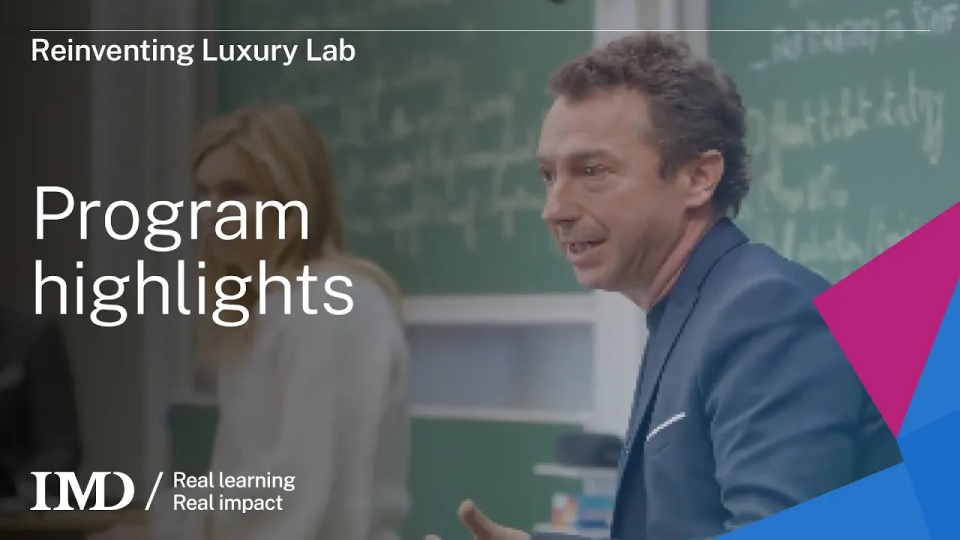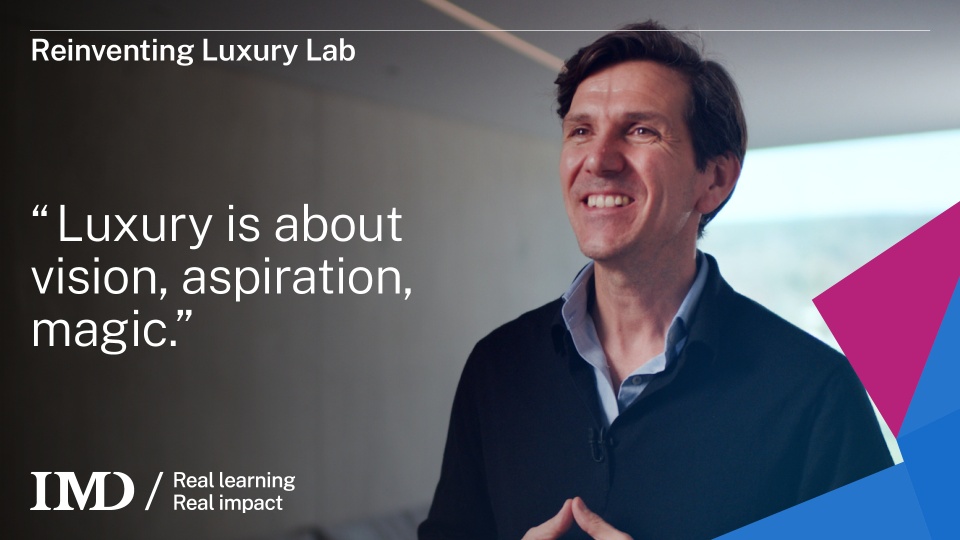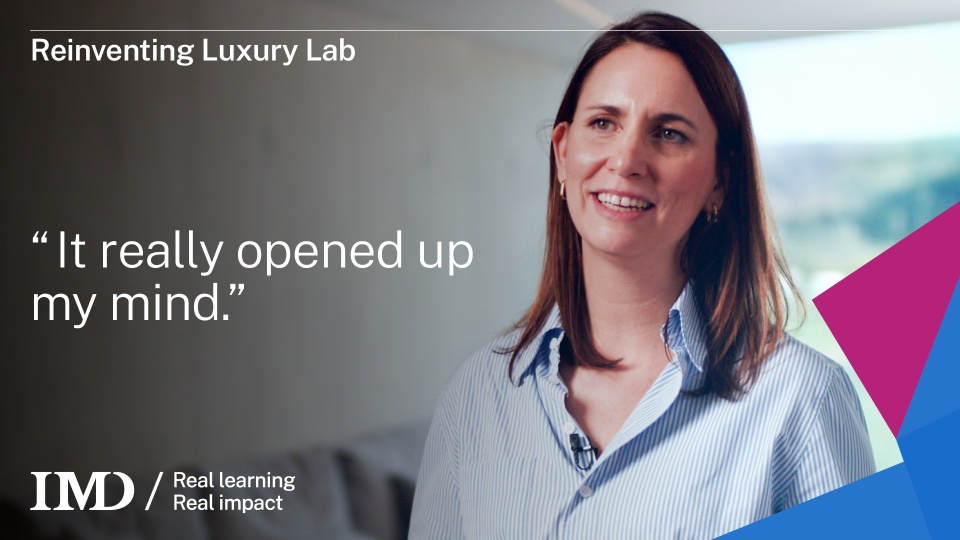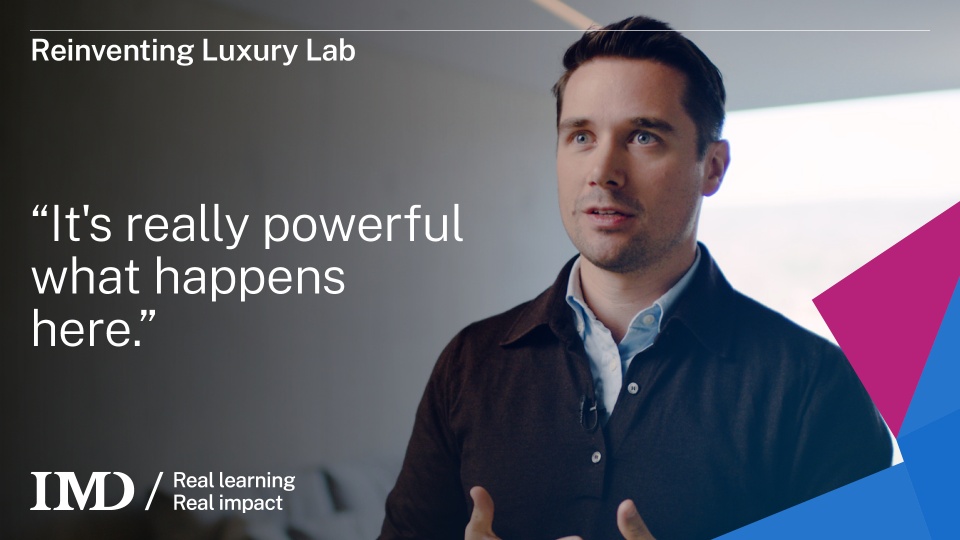IMD business school for management and leadership courses
AI is daunting. Where do you start?
The pressure to act is real, but the path forward isn’t always clear. With the rapid evolution of AI, GenAI, and agentic AI, the questions pile up: Where do we start? What’s hype vs. what’s real? How do we ensure this drives value — not risk? At IMD, we help senior leaders cut through the noise and turn AI into real business impact.

![]()
Organizations should focus on three essential dimensions of AI adoption: business value, data, and people. Together, these elements form a value-data-people framework, a structure for conceptualizing the critical questions that decision-makers must address. What value does the organization aim to create with AI? Does it have access to the required data? And how will employees and stakeholders perceive and adapt to the changes?

José Parra Moyano
Professor of Digital Strategy
Some businesses are accelerating. Others are stalling.
The difference is leadership.
A growing divide
A growing divide is emerging across industries:
- Companies like Securitas are leveraging AI to drive transformation at scale — aligning strategy, operations, and culture around intelligent technologies.
- Meanwhile, others are stuck in isolated pilots, struggling to translate AI ambition into measurable business impact.
![]()
Businesses that embrace AI are leading. The rest are catching up or falling behind. They’re using AI for everything from repetitive task automation, work quality enhancement, and creativity and innovation. AI leaders aren’t just more efficient, they’re more innovative, more adaptive, and more competitive. Meanwhile, those that delay are left reacting to changes they didn’t initiate. They struggle to attract talent, lose ground to faster-moving competitors, and risk becoming irrelevant in markets shaped by digital and AI disruption.
In this new era, embracing AI isn’t optional. It’s a defining characteristic of the leaders who are shaping the future, while the rest scramble to catch up or risk falling irreversibly behind.

José Parra Moyano
Professor of Digital Strategy
What separates the front runners from the rest?
It’s not access to technology — it’s executive leadership.
Organizations that succeed are those where senior leaders understand AI, embrace GenAI and agentic AI, and know how to embed these technologies into their unique business models.
Securitas case study
Securitas transformed from a traditional guarding company into a digital-first, data-driven security leader.
In 2018, IMD helped Securitas redefine its strategic purpose and create a leadership-aligned transformation roadmap.
The result? A massive shift from <1,000 to over 130,000 digitalized client sites. The launch of Securitas Technology and Securitas Digital, integrating AI and data analytics into core services. The technology-driven revenue grew from 20% to 32%, supported by the $3.2B acquisition of Stanley Security.
“Leaders who bridge the gap between sustainability initiatives and business strategy will shape the future. ”
The luxury industry is transforming, and staying ahead requires bold innovation. Reinventing Luxury Lab is an exclusive experience where industry leaders collaborate, challenge conventions, and co-create new strategies to shape the future of their brand.
Assortment optimization presents a complex challenge for retailers, as it depends on numerous decision factors. Changes in assortment can result in demand redistribution with multi-layered consequences. This complexity is even more pronounced for omnichannel retailers, which have to manage assortments across multiple sales channels. Choice model…
Research Information & Knowledge Hub for additional information on IMD publications
Considering ambidexterity and dynamic capability theories, the present study aims to examine the relationship between AI capabilities, export market exploration and exploitation, international marketing capabilities and export performance. Moreover, the moderating effect of environmental dynamism and competitive intensity is measured.
Research Information & Knowledge Hub for additional information on IMD publications
Understanding conflict in family businesses is a complex but essential study area for practitioners and academics. To enhance theoretical precision and provide practical insights, this article presents a comprehensive framework of family business conflict that integrates perspectives from the family business, organizational, management, psycholo…
Research Information & Knowledge Hub for additional information on IMD publications
The supply chain risk management literature differentiates between disruption risk that arises from supply disruptions to normal activities and recurrent risk that arises from problems in coordinating supply and demand in the absence of disruptions (Kleindorfer and Saad 2005). Over the past decades, significant research has been carried out to b…
Research Information & Knowledge Hub for additional information on IMD publications
We systematically review business research concerning the planetary boundaries framework: A natural science framework that identifies nine Earth system boundaries that govern the safe operating space for humanity. Ten years after the introduction of the planetary boundaries in business studies, we pose two critical questions: How has the planeta…
Research Information & Knowledge Hub for additional information on IMD publications
Environmental claims are becoming increasingly common in corporate disclosures, but whether they correspond to genuine environmental action rather than greenwashing remains unclear. This paper explores the relationship between companies’ environmental claims and their tangible efforts in pursuing environmental sustainability objectives, proxied …
Research Information & Knowledge Hub for additional information on IMD publications

In 2022, the NatWest Executive Committee (ExCo) shifted its strategy to focus increasingly on growth. The previous 15 years had been spent on restructuring and reshaping following a government recapitalisation in 2008. For the ExCo to transform NatWest into a future-ready bank, it embarked on a four-retreat engagement with IMD to help it develop…
Research Information & Knowledge Hub for additional information on IMD publications

Picking up where Case A ends, Case B reveals that Grupo Inca decided to innovate internally and develop a new fabric from the rare black alpaca fiber. After nearly three years of effort, the Inoue brothers’ dream of creating a luxury collection from undyed black alpaca fiber became a reality. The collaboration between the Inoue brothers, Incalpa…
Research Information & Knowledge Hub for additional information on IMD publications

Grupo Inca, a conglomerate that owned Peru’s leading textile business with a long history of working with alpaca fleece, was at a crossroads regarding the conservation and commercialization of black alpaca fiber. Historically, black alpacas were as common as their lighter-colored counterparts, but market preferences drove them to near extinction…
Research Information & Knowledge Hub for additional information on IMD publications

This case follows the steps taken by Kaichi Yokoyama, Moon Creative Lab’s CEO, to establish the entity as a pioneering venture studio and entrepreneurial talent development entity within the Mitsui Group. As a corporate venture, the story began in 2018 when Kaichi embarked on a mission to reshape Mitsui’s deeply entrenched traditions and pursue …
Research Information & Knowledge Hub for additional information on IMD publications
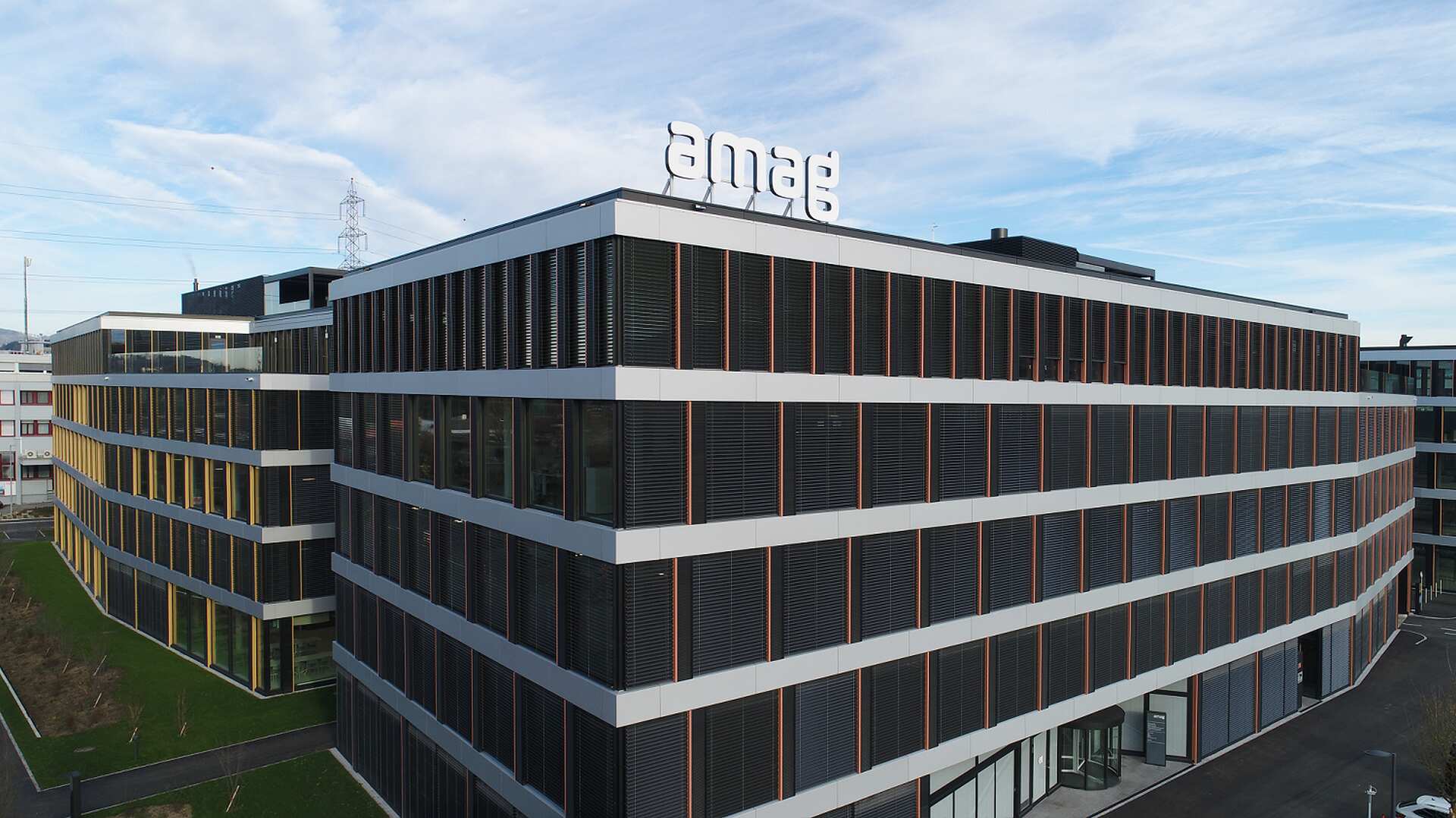
AMAG is Switzerland’s premier automotive retail and service company, holding exclusive rights to import Volkswagen Group car brands such as Audi, Volkswagen, Skoda, Cupra and Seat. In 2022 AMAG had 7,300 employees and a revenue of CHF 4.4 billion. The electrification of the automotive industry and the introduction of the agency model by the Volk…
Research Information & Knowledge Hub for additional information on IMD publications

Nespresso, the global leading brand in portioned coffee, is facing an existential threat. The company’s current market base, which consists primarily of aging consumers, is likely to decline in the medium to long term. To compensate for the certain shortfall, the company needs to attract young coffee drinkers among Millennials and Generation Z, …
Research Information & Knowledge Hub for additional information on IMD publications
Some businesses are accelerating. Others are stalling.
The difference is leadership.
A growing divide is emerging across industries:
- Companies like Securitas are leveraging AI to drive transformation at scale — aligning strategy, operations, and culture around intelligent technologies.
- Meanwhile, others are stuck in isolated pilots, struggling to translate AI ambition into measurable business impact.


From adding efficiencies in current processes to completely reinventing how organizations address strategic issues, AI is already impacting businesses the world over.
Amit Joshi
Professor of AI, Analytics and Marketing Strategy
